STO (Safe Torque Off): Maximizing Safety in SANYO DENKI’s Servo Systems

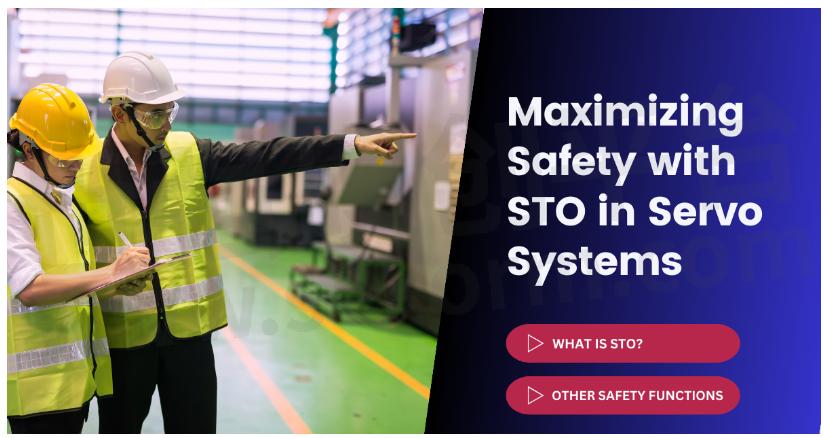
Ensuring Safety with SANYO DENKI’s servo systems Safety Module
In industrial automation, ensuring safety is of utmost importance. SANYO DENKI’s servo systems are designed with a suite of safety functions, including the essential Safe Torque Off (STO) feature, to ensure maximum protection and seamless integration into various applications.
Functional Safety with Safety Module
Broadly compatible with functional safety standards, SANYO DENKI’s servo systems’ functional safety module enables easy integration of multiple safety functions within your devices. These functions comply with the IEC/EN 61800-5-2:2016 standard, ensuring reliability and peace of mind.

Key Safety Functions

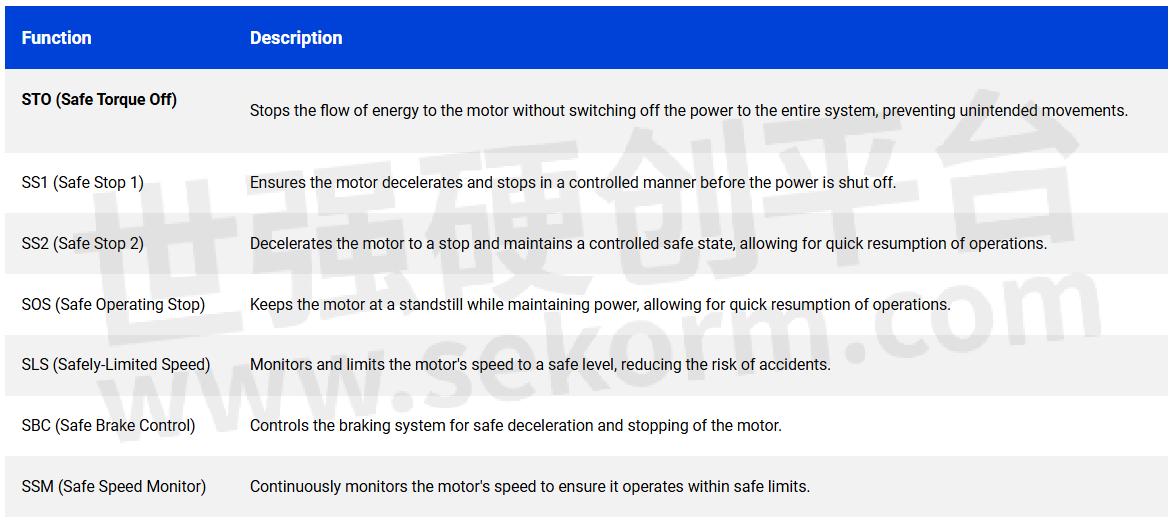
Safety Module model comes with all of above safety features.
Regular amplifiers come with STO, including our new SANMOTION G Servo System.
See below chart to see which safety functions are available with Safety Module models and regular servo amplifier models (STO models). Feel free to contact us for selection support.

Example: RS3 Series Servo Systems EtherCAT model
Deep Dive: What is Safe Torque Off (STO)?
Most of SANYO DENKI’s amplifier lineups come with STO. But what exactly is Safe Torque Off and how does it enhance safety?
The STO function is a safety mechanism that stops the flow of energy to the motor without switching off the power to the entire system. This prevents the motor from generating torque, effectively halting any unintended movements during critical situations. It’s akin to an emergency brake for your machinery, providing peace of mind and protection.
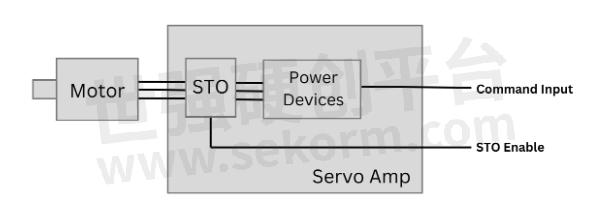
Enabling the STO Function
For those who wish to utilize the Safe Torque Off feature, separate connectors are typically used for linking to safety devices such as emergency stop buttons, relays, and safety curtains. The CN4 connector is specifically used for the STO function. To turn the servo on (motor in operation), a safety device must be connected to CN4 to enable STO. Some customers may choose to manage safety protocols through a higher-level Programmable Logic Controller (PLC) instead of using the STO feature.
System Configuration of Functional Safety Module
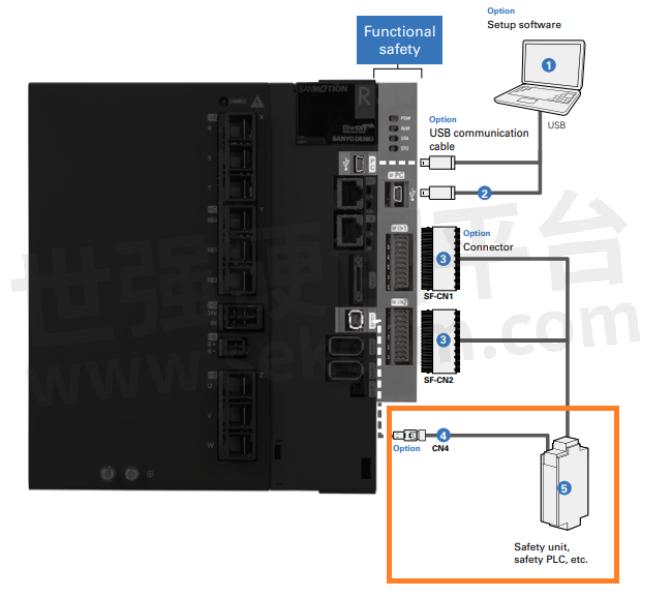
Application Examples
Combination with safety components or controllers may be needed for some applications.
Industrial Robots
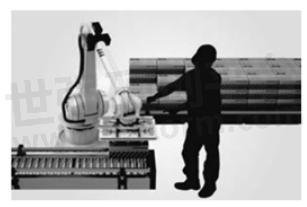
By setting a stop area around a robot, the SS1 function can slow down and stop the robot (once stopped, the motor power is shut off) when a worker enters the area.
The SLS function can limit the robot’s operation speed at a safe level while a worker is within the area.
Conveyor Line
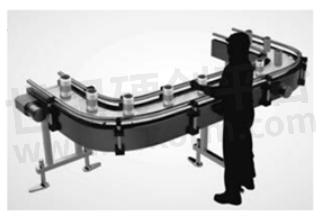
The STO function can shut off the power of motors without shutting off the conveyor power, enabling workers to safely perform maintenance and other tasks. Furthermore, the conveyor operation can be resumed right away for improved work efficiency.
The SLS function can limit the machine operation speed at safe levels, enabling workers to do inspection and setup works without shutting off the conveyor operation.
Conclusion
SANYO DENKI’s servo systems with integrated safety functions offer flexibility and security, catering to the diverse needs of our customers. Whether you’re using STO, SS1, SLS, or any other safety functions, our systems provide the reliability and peace of mind that industry professionals demand.
- +1 Like
- Add to Favorites
Recommend
- SANYO DENKI Develops Brand New SANMOTION G Servo System That Combines Powerful Performance and User-Friendliness
- SANYO DENKI Expands Its Lineup of SANMOTION G Servo System, Which Offers “Powerful“ and “Friendly“ Features
- AC Servo Motor System SANMOTION G Received GOOD DESIGN AWARD 2023
- SANYO DENKI Develops SANMOTION C S500 Series Motion Controller That Can Control 7-Axis Articulated Robots
- SANYO DENKI Develops SANMOTION C S200 Motion Controller for Monitoring and Maintenance of Equipment
- SANYO DENKI Develops SANMOTION Multi-Axis Integrated Linear Servo Motor Unit That Simplifies the Assembly Process
- SANYO DENKI Develops Stepping Systems Featuring High Torque and Low Vibration
- 10 Essential OPC-UA Considerations Networking Motion Control
This document is provided by Sekorm Platform for VIP exclusive service. The copyright is owned by Sekorm. Without authorization, any medias, websites or individual are not allowed to reprint. When authorizing the reprint, the link of www.sekorm.com must be indicated.






























































































































































































































































































































































































































































































































































































































































































































































































































































































